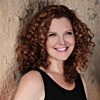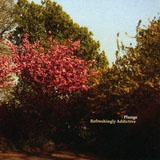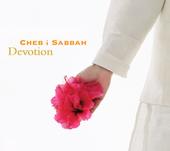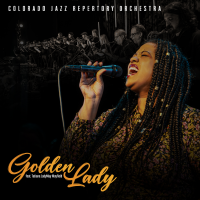Home » Jazz Articles » Interview » Jay Clayton: Believing in The Word
Jay Clayton: Believing in The Word
The message is really it. It could be a verbal or nonverbal message, but if there’s a word you have to believe in that word.
Clayton spoke from her home in New Paltz about her ongoing musical exploration and current projects.
All About Jazz: What prompted your return to New York and what's been happening for you here since you left Seattle?
Jay Clayton: I had been coming back to New York to perform for all the years I lived in Seattle, but I decided to return because most of my collaborators are here and it's closer to Europe. I go to Europe a lot and it's easier to fly to Europe from New York than from Seattle. And it was just time to get back to this energy. I wasn't here very long before The New School started sending me students, and then Gary Thomas—a wonderful tenor player—offered to have me come down to the Peabody Institute [at Johns Hopkins University in Baltimore] and start a vocal jazz program there. So I go down there every two or three weeks, and I have my freelance teaching and that's my basic thing. With that I can focus on performing.
AAJ: Has your career focus changed since you've returned?
JC: My focus is the same, it's just that there are a lot more artists here that I can work with. It's easier to be a more visible presence in New York, even though you can't work in New York itself too much. I work here every few months, but nobody makes their living performing in New York. Still, I love it here because it's very diverse—I don't think there's any place like it. It's just got all kinds of music and so many jazz artists. As you know from listening to my music, I'm eclectic in my jazz forms—I'll go from standards to free jazz to working with a tap dancer, Brenda Bufalino—and that's the way it's always been. For years I questioned that, but now I understand that it's really my thing. On a sextet or quintet CD you'll hear all of it, from poetry to "How Deep Is the Ocean." And I love that—I find that you need to explore all of that.
AAJ: Given the broad scope of your work, how do you approach your material?
JC: It's hard to explain music. I just get drawn to a certain kind of material. I have so much repertoire and I keep finding new material. Repertoire is the key—sometimes there'll be more standards and fewer originals and sometimes the other way, but there'll always be everything. I'm an improviser, so I'm looking for different vehicles for that. The music has to change—sometimes in an angular way, sometimes harmonic and sometimes melodic. And I also choose to work with different musicians, those who have the same taste as I do. But they get to be themselves—they aren't going to be just accompanying me.
AAJ: What would you say is the most important aspect of a singer's performance?
JC: The message is really it. It could be a verbal or nonverbal message, but if there's a word you have to believe in that word. It's the message that evokes phrasing, the style and dynamics. Sometimes I do nonverbal things, but there is still some kind of message or feeling, and you have to believe what you're trying to say. This is true for instrumentalists, too. They may do a lot of beautiful things, but the ones we love have some sort of emotional connection to whatever they're doing. As singers we get to have a word, so we have to be literal. We might love a song's melody and harmony, but if weâ're not sure about the lyric, I think you just canâ't sing that song. It's important to be true to the story that we're telling. You canâ't do a song if you don't connect to it. The big word is connection.
AAJ: You've worked with lots of prominent instrumentalists. What did you learn from them?
JC: It's true that I've been lucky to know a lot of instrumentalists. My mentors are Eric Dolphy, Ornette Coleman and John Coltrane. My God, they wrote beautiful music. In my listening and my discovery of jazz I listened to more horn players and have been more influenced by them. I learned jazz feel and to improvise by listening to them. The singers inspired me to be myself, though. It's interesting—when you hear someone's voice you can almost tell who they've listened to—or haven't. I listen to singers for emotional inspiration.
AAJ: Speaking of singers, you have a long-standing friendship with singer Sheila Jordan. Can you speak about it?
JC: Sheila has been both a mentor and a friend. I first read about her in Down Beat in the '60s, and when I came to New York I sought her out. That was in the '70s. We just hit it off and she's been the best supporter of my music and she's somebody I look up to. She's a decade ahead of me, you see. We have performed together and we teach together and have every intention to record in the future. Wouldn't that be great? We're so different but the same. Now she's one of my best friends. I live in New Paltz and she lives near Albany and we share her apartment in the city, so I go in every week. I share an apartment in the city with Sheila Jordan—how lucky am I? Sheila's the best!
AAJ: What else are you working on now and with whom?
JC: Basically I go project to project and there's plenty I'm working on, little by little. I have a recording project based on the poetry of Emily Dickinson with Kirk Nurock that's partially done. I also have a solo recording with electronics called Singing and Saying the Poets—that's just me, myself and I. And I just recorded a new standards CD with Jack Wilkins and Jay Anderson. My next sextet CD is going to be with Gary Thomas and [soprano saxophonist] Jane Ira Bloom and [drummer] Jerry Granelli, and I'm not sure of the other personnel yet. I'll also soon be recording another duo CD with Jerry Granelli. And Iâ'm working with a conductor in Zurich who's making arrangements for me with a trio, a guest horn player and a string chamber orchestra. How cool is that? I'm going to go to Zurich in September and May to work on that. That's a lot of projects and I'm sure I didnâ't mention everything. But I'm serious about all [of them] and so I have to take it just one step at a time.
AAJ: You've been a singer for more than forty years. What kind of changes have you seen in the jazz world during that time?
JC: Recording is changing and I don't think it's all bad. Making a CD today is way different than it was twenty years ago. Some artists say that everything is changing and that's why they canâ't record, but youâ've got to stay in the little picture. I'm both a little picture and a big picture person, but work is in the little picture. Since I returned I started to understand what's going on with the younger artists—there's a lot of good stuff going on with them. I used to produce concerts in my loft, so while I don't love self-production, I advocate that if there's a music that has to be heard, the artist has to make that happen somehow. That's what's happening with young people and I encourage that.
Selected Discography
Jay Clayton, Brooklyn 2000 (Sunnyside, 2000)Jay Clayton, Circle Dancing (Sunnyside, 1996)
Jay Clayton/Fred Hersch, Beautiful Love (Sunnyside, 1994)
Quartett, No Secrets (New Albion, 1988)
Jay Clayton/Jerry Granelli, Sounds Songs (JMT/Winter & Winter, 1985)
Jay Clayton, All-Out (Anima, 1980)
Tags
PREVIOUS / NEXT
Support All About Jazz
 All About Jazz has been a pillar of jazz since 1995, championing it as an art form and, more importantly, supporting the musicians who make it. Our enduring commitment has made "AAJ" one of the most culturally important websites of its kind, read by hundreds of thousands of fans, musicians and industry figures every month.
All About Jazz has been a pillar of jazz since 1995, championing it as an art form and, more importantly, supporting the musicians who make it. Our enduring commitment has made "AAJ" one of the most culturally important websites of its kind, read by hundreds of thousands of fans, musicians and industry figures every month.



























